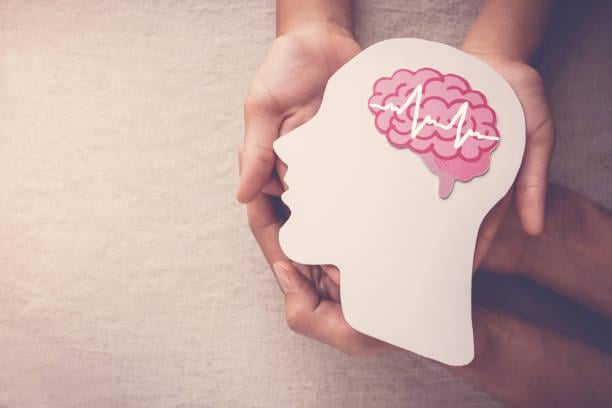Categories
- Bariatric Surgery (11)
- Black Fungus (5)
- Bone Marrow transplant (3)
- Brain Tumor Surgery Navigation Technology (20)
- Cardiac Surgery (66)
- Cardiology (97)
- Computer navigation technology for joint replacements (20)
- Covid Vaccination (17)
- Critical Care (2)
- Dental (19)
- Dermatology (31)
- Dialysis Support Group - “UTSAAH” (11)
- Dietitian (33)
- Emergency Medicine (4)
- Emotional Health (11)
- Endocrinology (33)
- ENT (20)
- Gastroenterology and GI Surgery (53)
- General and Laparoscopic Surgery (21)
- General Surgery (4)
- Gynecology & Obstetrics (183)
- Hematology (20)
- Internal Medicine (294)
- Kidney Transplant (50)
- Kidney Transplantation (20)
- Lung Cancer (8)
- Minimal Invasive Surgery (1)
- Mother & Child (20)
- mucormycosis (5)
- Nephrology (61)
- Neurology (147)
- Neurosurgery (68)
- Nutrition and Dietetics (107)
- Omicron Variant (1)
- Oncology (288)
- Ophthalmology (10)
- Orthopaedics & Joint Replacement (86)
- Paediatrics (59)
- Pediatric Nephrology (3)
- Physiotherapy (5)
- Plastic & Reconstructive Surgery (6)
- Psychiatry and Psychology (90)
- Psychologist (28)
- Pulmonology (72)
- Rheumatology (13)
- Spine Services (21)
- Transradial Angioplasty (16)
- Urology (84)
Query Form
Posted on Jun 29, 2022
What happens in your brain when you have epilepsy?
Epilepsy is a long-term (chronic) disease that causes repeated seizures due to abnormal electrical signals produced by damaged brain cells. A burst of uncontrolled electrical activity within brain cells causes a seizure. Seizures can include changes to your awareness, muscle control (your muscles may twitch or jerk), sensations, emotions and behavior.
Epilepsy is also called a seizure disorder.
Who does epilepsy affect?
Anyone, of any age, race or sex, can develop epilepsy.
What happens in your brain when you have epilepsy?
The cells in your brain send messages to and receive messages from all areas of your body. These messages are transmitted via a continuous electrical impulse that travels from cell to cell. Epilepsy disrupts this rhythmic electrical impulse pattern. Instead, there are bursts of electrical energy — like an unpredictable lightning storm — between cells in one or more areas of your brain. This electrical disruption causes changes in your awareness (including loss of consciousness), sensations, emotions and muscle movements.

What are the types of epilepsies and their seizure symptoms?
Healthcare providers classify epilepsies by their seizure type. Seizure categories are based on where they start in your brain, your level of awareness during a seizure and by presence or absence of muscle movements.
There are two major seizure groups:
Focal onset seizures
Focal onset seizures start in one area, or network of cells, on one side of your brain. This seizure used to be called partial onset seizure. There are two types of focal seizures:
Focal onset aware seizure means you’re awake and aware during the seizure. Healthcare providers once called this a simple partial seizure.
Symptoms may include:
- Changes in your senses — how things taste, smell or sound.
- Changes in your emotions.
- Uncontrolled muscle jerking, usually in arms or legs.
- Seeing flashing lights, feeling dizzy, having a tingling sensation.
Focal onset impaired awareness seizure means you’re confused or have lost awareness or consciousness during the seizure. This seizure type used to be called complex partial seizure. Symptoms may include:
Blank stare or a “staring into space.”
Repetitive movements like eye blinking, lip-smacking or chewing motion, hand rubbing or finger motions.
Generalized onset seizures
General onset seizures affect a widespread network of cells on both sides of your brain at the same time. There are six types of generalized seizures.
Absence seizures: This seizure type causes a blank stare or “staring into space” (a brief loss of awareness). There may be minor muscle movements, including eye blinking, lip-smacking or chewing motions, hand motions or rubbing fingers. Absence seizures are more common in children, last for only seconds (usually less than 10 seconds) and are commonly mistaken for daydreaming. This seizure type used to be called petit mal seizures.
Atonic seizures: Atonic means “without tone.” An atonic seizure means you’ve lost muscle control or your muscles are weak during your seizure. Parts of your body may droop or drop such as your eyelids or head, or you may fall to the ground during this short seizure (usually less than 15 seconds). This seizure type is sometimes called “drop seizure” or “drop attack.”
Tonic seizures: Tonic means “with tone.” A tonic seizure means your muscle tone has greatly increased. Your arms, legs, back or whole body may be tense or stiff, causing you to fall. You may be aware or have a small change in awareness during this short seizure (usually less than 20 seconds).
Clonic seizures: “Clonus” means fast, repeating stiffening and relaxing of a muscle (“jerking”). A clonic seizure happens when muscles continuously jerk for seconds to a minute or muscles stiffen followed by jerking for seconds up to two minutes.
Tonic-clonic seizures: This seizure type is a combination of muscle stiffness (tonic) and repeated, rhythmic muscle jerking (clonic). Healthcare providers may call this seizure a convulsion, and once called it a grand mal seizure. Tonic-clonic seizures are what most people think of when they hear the word “seizure.” You lose consciousness, fall to the ground, your muscles stiffen and jerk for one to five minutes. You may bite your tongue, drool and lose muscle control of bowels or bladder, making you poop or pee.
Myoclonic seizures: This seizure type causes brief, shock-like muscle jerks or twitches (“myo” means muscle, “clonus” means muscle jerking). Myoclonic seizures usually last only a couple of seconds.
As your healthcare provider learns more, your seizure type may change to focal or generalized onset seizure.
What are seizure triggers?
Seizure triggers are events or something that happens before the start of your seizure.
Commonly reported seizure triggers include:
- Stress.
- Sleep issues such as not sleeping well, not getting enough sleep, being overtired, disrupted sleep and sleep disorders like sleep apnea.
- Alcohol use, alcohol withdrawal, recreational drug use.
- Hormonal changes or menstrual hormonal changes.
- Illness, fever.
- Flashing lights or patterns.
- Not eating healthy, balanced meals or drinking enough fluids; vitamin and mineral deficiencies, skipping meals.
- Physical overexertion.
- Specific foods (caffeine is a common trigger).
- Dehydration.
- Certain times of the day or night.
- Use of certain medications. Diphenhydramine, an ingredient in cold, allergy and sleep over-the-counter products, is a reported trigger.
- Missed anti-seizure medication doses.
How can I figure out my seizure triggers?
Some people discover that their seizures occur consistently during certain times of the day or around certain events or other factors. You may want to track your seizures — and the events around your seizures — to see if there’s a pattern.
In your seizure diary, note the time of day each seizure happened, the events or special circumstances happening around the time of the seizure and how you felt. If you suspect you’ve identified a trigger, track that trigger to find out if it’s really a trigger. For example, if you think caffeine is a seizure trigger, do you have a seizure after consuming every caffeinated food or beverage, after “x” number of caffeinated foods/beverages or at certain times of day after consuming caffeine? Caffeine may or may not be the trigger when thoroughly reviewed.
What are the signs and symptoms of epileptic seizures?
The main symptom of epilepsy is recurring seizures. Your symptoms, however, vary depending on the type of seizure you have.
Seizure signs and symptoms include:
- Temporary loss of awareness or consciousness.
- Uncontrolled muscle movements, muscle jerking, loss of muscle tone.
- Blank stare or “staring into space” look.
- Temporary confusion, slowed thinking, problems with talking and understanding.
- Changes in hearing, vision, taste, smell, feelings of numbness or tingling.
- Problems talking or understanding.
- Upset stomach, waves of heat or cold, goosebumps.
- Lip-smacking, chewing motion, rubbing hands, finger motions.
- Psychic symptoms, including fear, dread, anxiety or déjà vu.
- Faster heart rate and/or breathing.
Most people with epilepsy tend to have the same type of seizure, so have similar symptoms with each seizure.
What causes epilepsy?
Most of the time (in up to 70% of cases), the cause of seizures is not known. Known causes include:
Genetics - Some types of epilepsy (like juvenile myoclonic epilepsy and childhood absence epilepsy) are more likely to run in families (inherited). Researchers believe that although there’s some evidence that specific genes are involved, the genes only increase the risk of epilepsy, and other factors may be involved. There are certain epilepsies that result from abnormalities that affect how brain cells can communicate with each other and can lead to abnormal brain signals and seizures.
Mesial temporal sclerosis - This is a scar that forms in the inner part of your temporal lobe (part of your brain near your ear) that can give rise to focal seizures.
Head injuries - Head injuries can result from vehicular accidents, falls or any blow to the head.
Brain infections - Infections can include brain abscess, meningitis, encephalitis and neurocysticercosis.
Immune disorders - Conditions that cause your immune system to attack brain cells (also called autoimmune diseases) can lead to epilepsy.
Developmental disorders - Birth abnormalities affecting the brain are a frequent cause of epilepsy, particularly in people whose seizures aren’t controlled with anti-seizure medications. Some birth abnormalities known to cause epilepsy include focal cortical dysplasia, polymicrogyria and tuberous sclerosis. There’s a wide range of other brain malformations known to cause epilepsy.
Metabolic disorders - People with a metabolic condition (how your body obtains energy for normal functions) can have epilepsy. Your healthcare provider can detect many of these disorders through genetic tests.
Brain conditions and brain vessel abnormalities. Brain health issues that can cause epilepsy include brain tumors, strokes, dementia and abnormal blood vessels, such as arteriovenous malformations.
How is epilepsy diagnosed?
Technically, if you experience two or more seizures that weren’t caused by a known medical condition — for example, from alcohol withdrawal or low blood sugar — you’re considered to have epilepsy. Before making a diagnosis, your healthcare provider (or epilepsy specialist) will perform a physical exam, take your medical history and may order blood work (to rule out other causes). They may ask about your symptoms during the seizure and conduct other tests, as well.
Your healthcare provider will ask you or your family member (who’s witnessed your seizure) if you experienced any of the following during a seizure:
- Muscle jerks.
- Muscle stiffness.
- Loss of bowel or bladder control (you peed or pooped during the seizure).
- Change in breathing.
- Skin color turned pale.
- Had a blank stare.
- Lost consciousness.
- Had problems talking or understanding what was said to you.
What tests will be done to diagnose this condition?
Tests include:
Electroencephalography (EEG): This test measures the electrical activity in your brain. Certain abnormal electrical patterns are related to seizures.
Brain scans: Magnetic resonance imaging (MRI) to look for such things as tumors, infections or blood vessel abnormalities.
Can epilepsy be prevented?
Although many causes of epilepsy are out of your control and unpreventable, you can reduce your chance of developing a few conditions that might lead to epilepsy, such as:
To lower your risk of traumatic brain injury (from blows to your head), always wear your seatbelt when driving and drive “defensively”; wear a helmet when biking; clear your floors of clutter and power cords to prevent falls; and stay off ladders.
To lower your risk of stroke, eat a healthy diet (such as the Mediterranean diet), maintain a healthy weight and exercise regularly.
Seek therapy for substance abuse. Alcohol and other illegal drugs can damage your brain, which can then lead to epilepsy.
Is there a cure for epilepsy?
There’s no cure for epilepsy. But there are many options to treat epilepsy.
Will I always have seizures?
About 70% of people become seizure-free with proper treatment within a few years. The remaining 30% are considered to have drug-resistant epilepsy. These people should go to an epilepsy center to determine if they’re candidates for epilepsy surgery.



